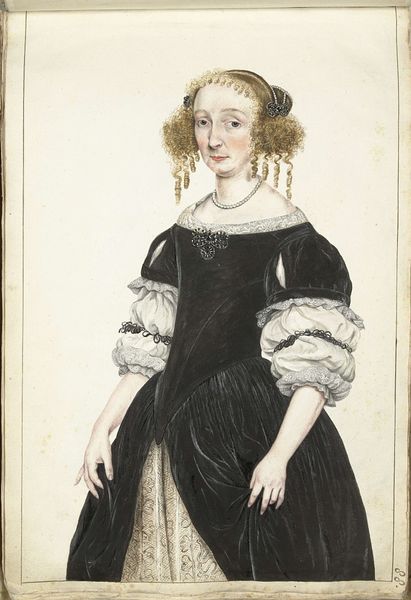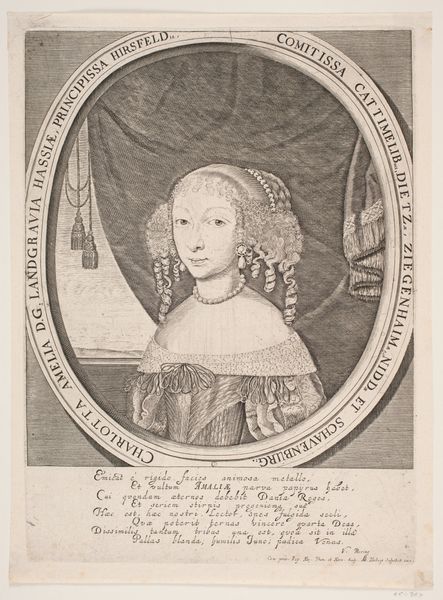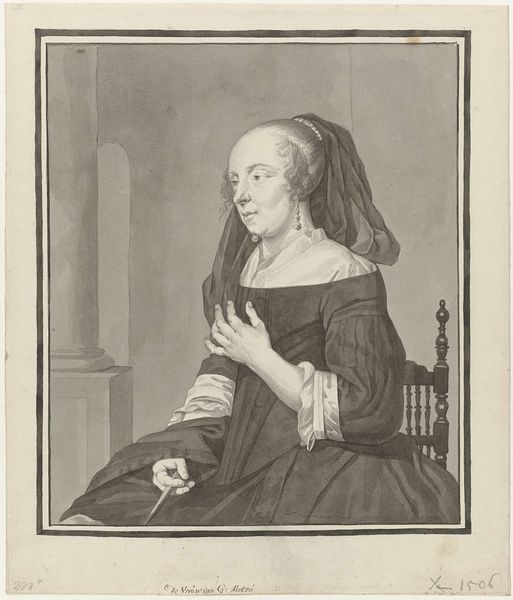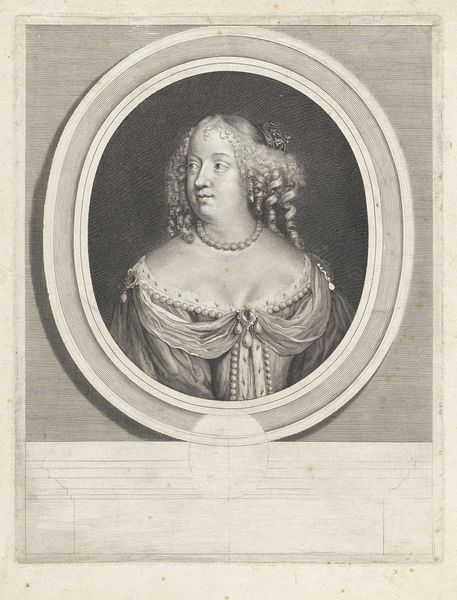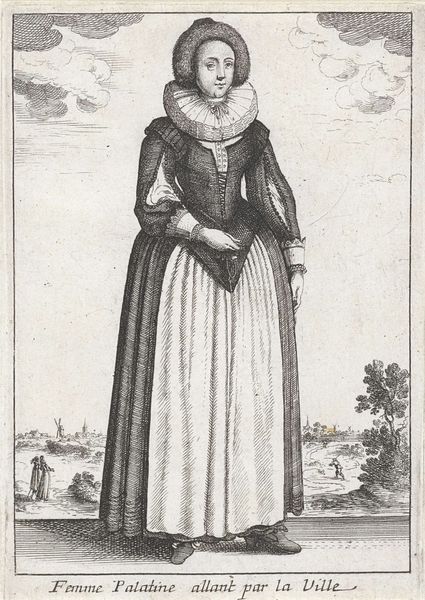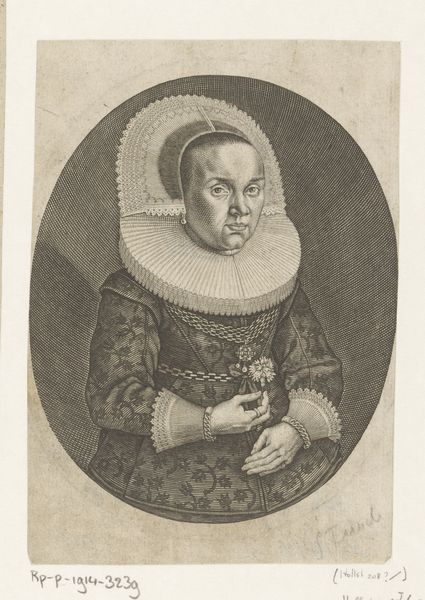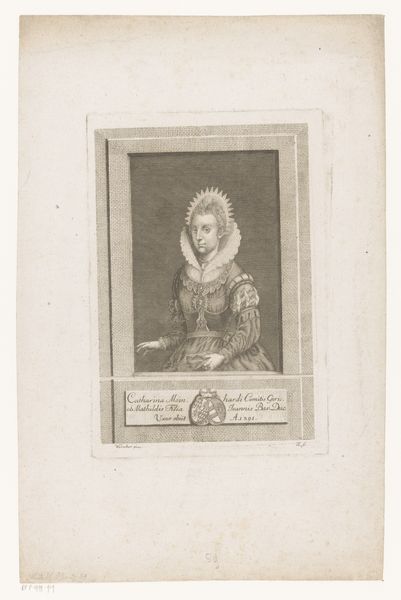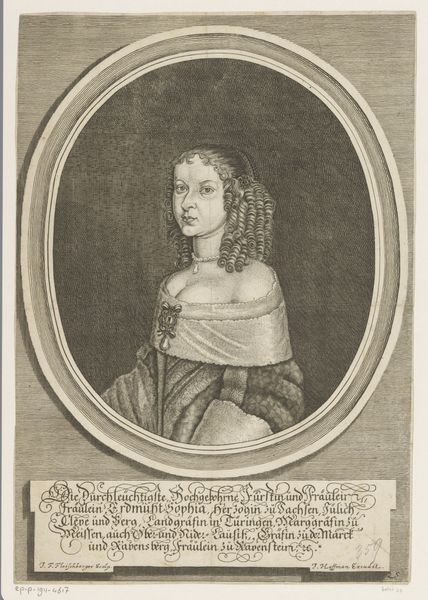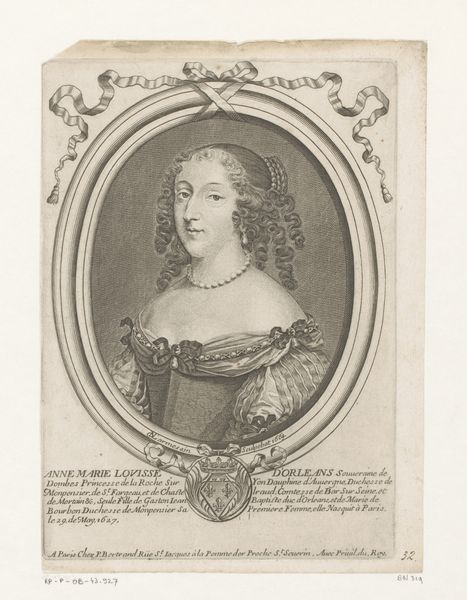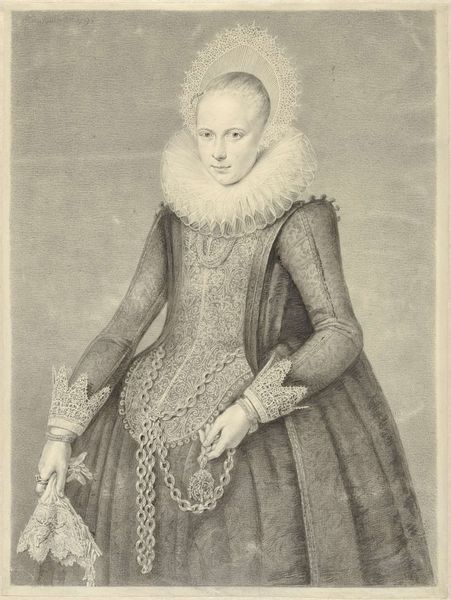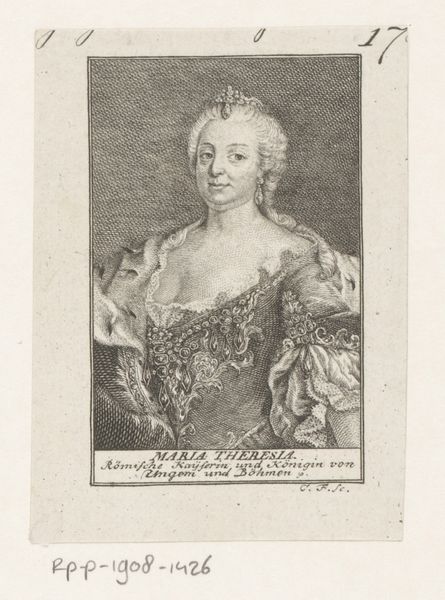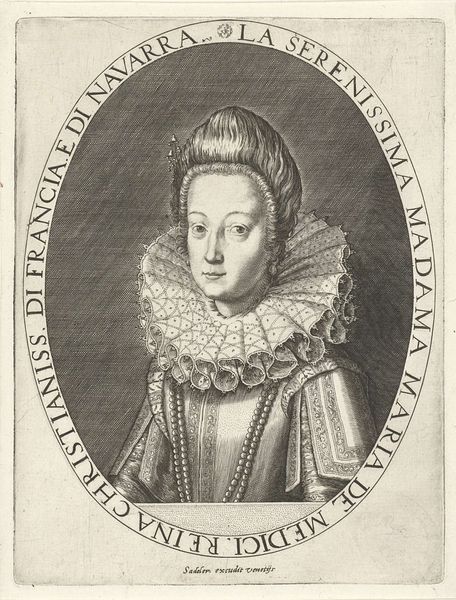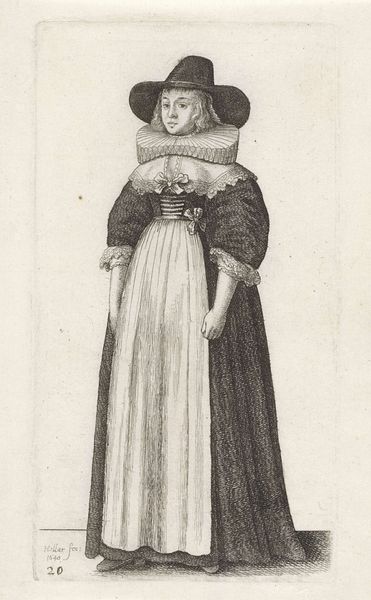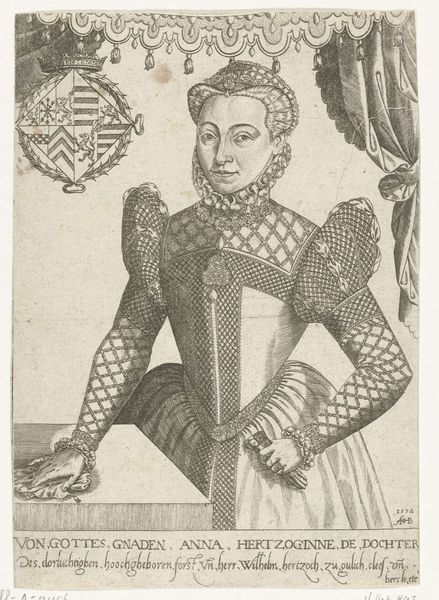
drawing, watercolor
#
portrait
#
drawing
#
self-portrait
#
dutch-golden-age
#
watercolor
#
coloured pencil
#
watercolour illustration
Dimensions: height 243 mm, width 360 mm
Copyright: Rijks Museum: Open Domain
Curator: I’m struck by the intimate scale and the direct gaze in this self-portrait by Gesina ter Borch. Painted around 1661, this delicate drawing uses watercolour and colored pencil. What's your initial feeling about it? Editor: There's a palpable stillness, wouldn't you agree? Her direct gaze is quietly challenging. You see that dark fabric behind her, a curtain almost—it feels very staged. Curator: It does have a performative air. You know, it makes me wonder what she's concealing or perhaps revealing about herself by curating this particular image. There is also a short verse at the bottom, what does it says about that image. Editor: The inclusion of text speaks to a sophisticated understanding of how image and text work together to construct meaning. It is fascinating because she combines different genres. Curator: I imagine Ter Borch very carefully orchestrating the narrative. Even the fan becomes more than just an accessory, it is like an extension of her person, don't you think so? Editor: Absolutely. In the 17th century, personal adornments weren't frivolous. It was strategic communication through material objects, something akin to our modern signaling through social media profiles. Curator: It’s almost like a dialogue with herself, using various modes of expression—image, object, verse to understand or assert identity in the context of a restrictive society. Editor: Right! We often simplify women’s lives from the past but someone like Gesina challenges such limited perceptions, showing she was acutely conscious of societal conventions and deliberately worked with and against them to carve out a space for self-expression. Curator: Exactly. Ter Borch is really compelling and offers us an important way of seeing women who might be more complex that it appears at first glance. Editor: I am grateful for the possibility to view it at Rijksmuseum, this allows us to deepen that appreciation, viewing it together through both aesthetic and analytical lenses.
Comments
rijksmuseum about 2 years ago
⋮
Like other members of her illustrious artist family, Gesina ter Borch was a gifted artist. Three albums assembled by her have been preserved, including a scrapbook containing portraits by her of well-to-do people in everyday settings. Young women holding fans feature in many of these watercolours, including this self-portrait. The VOC imported Chinese fans from the beginning of the 17th century. Even though they were also subsequently made in the northern Netherlands, fans continued to be seen as an exotic accessory.
Join the conversation
Join millions of artists and users on Artera today and experience the ultimate creative platform.
